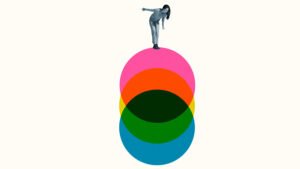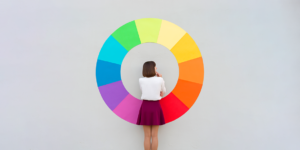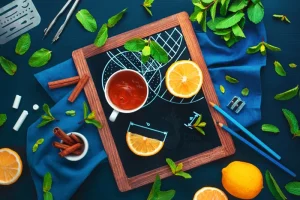What comes to your mind when you read the orange and blue background? Let me share the secret of using these two beautiful colours. Using colour well in photography may set the tone and draw the spectator. The most often used colour scheme in photography is orange and blue. What’s the reason behind it, if you know it? The theory of colour is essential.
The scenes’ colours often look dull and lifeless when shooting landscape or nature photographs. The trick is adding a punch to the image using a colour contrast. Do you know Blue and orange are complementary colours? Colour contrast is an essential aspect of photography. It helps to bring out details in objects and scenes.
Table Of Contents
- 1 The Basics of Color Theory Orange and Blue Background
- 1.1 Colours That Go Together
- 1.2 Analogous and Monochromatic
- 1.3 How Do You Apply Color Theory in Photography?
- 1.4 Why do photographers use orange and blue?
- 1.5 1- Orange and Blue have the most contrast
- 1.6 2- Orange and blue Emphasise One Another
- 1.7 3- Close to Ambient Light in Blue and Orange
- 1.8 4- Make Facial Skin Tones Pop with Blue and Orange
- 1.9 How to Take Pictures with Orange and Blue
- 1.10 How do you make darker or lighter values of colour in a photo?
- 1.11 In What Ways Are High-Value and Low-Value Contrast Different from One Another?
- 2 Conclusion
The Basics of Color Theory Orange and Blue Background

Colour theory is a set of rules about how colours look when they are put together. It talks about things such as: How to make new colour with an orange and blue background? Why do some colours look good from an aesthetic point of view? How to find the pairings that will help you reach your goal. Colour theory is a part of visual design that can be used to make an image more interesting. It shows how the colours go together by using the colour wheel. The colour wheel shows how hues group colours together. And it shows the most common ways that colours go with each other. Some colours look the same, colours that look different, and colours that look the same.
Colours That Go Together
On the colour wheel, these colours are opposite each other. The 3 colours that look good together
- Green and red
- Purple and yellow
- Blue and orange
They come from the model, where the primary colours are red, yellow, and blue. Colour theory says that the more different two colours are orange and blue background, the more contrast there is between them. So when two colours that don’t go together are next to each other, they make the most contrast.
Analogous and Monochromatic
Colours that are opposites are solid and bright. So, This is most clear when you look at them next to other colour schemes. The colours next to each other on the colour wheel are used in an analogous colour scheme. They get along well with each other. Orange and blue combination wall and Similar colours are great for photos that don’t stand out. Use colours that look alike if you want an image to look calm and smooth.
Monochromatic colours are made by adding shades, tones, and tints to a single base colour. (en.wikipedia.org). It makes it easier for a person to figure out what an image is about. In a split second, your brain can figure out the general mood. It would help if you used a monochromatic colour scheme for orange and blue background when you don’t want one part of an image to stand out.
How Do You Apply Color Theory in Photography?

Colour theory says there are three main ways to judge a colour: its hue, value, and saturation. (The intensity of a colour is also called its chroma.) One essential part of photography is knowing how to use these three primary colour evaluations. The colour value can help decide where the focus is, how the photo looks, and how it makes you feel.
| Colour Value | Colour value measures how light or dark a colour is |
| White balance | Standard SLR cameras and DSLR digital cameras will come with controls for white balance, which ensures that objects that are white in the real world look white in your photograph. |
| Colour Temperature | When setting their camera’s white balance, photographers who want complete control over their photos’ colour temperature use the Kelvin scale. |
| grayscale colour scheme | A grayscale colour scheme is a process of erasing all colours from a picture, leaving only shades of black, white, and grey. |
Why do photographers use orange and blue?
Using colours for orange and blue backgrounds that are different from each other is a simple way to make your photograph stand out. It works with a variety of colour combinations. But for some reason, orange and Blue is the one that stands out the most. Filmmakers also call this colour scheme “orange and teal” or “amber and teal.” It can be used for many reasons. Let’s look at each one in turn.
1- Orange and Blue have the most contrast
Orange and blue are next to each other on the colour wheel. Their exposures are more different than any other pair of complementary colours. Therefore, the design of the two-colour combination gives fantastic results. Grayscale is how you set your colour wheel. See how the most well-known contrast of orange and Blue turns into shades of grey. So, This makes it easier for our brains to figure out what things are—our minds like things to be simple.
2- Orange and blue Emphasise One Another
Even in a colour scheme with only one colour, blue and orange stand out. But if you put them in the same picture, you’ll get the most out of this combination. So, This is because the cool blue tones make the warm orange tones stand out more. And vice versa. Additionally, hot orange and calm blue have opposite connotations in orange and blue backgrounds.
Contrary to most complimentary colour schemes. They stand for opposites such as heat and cold, fire and ice, ground and sky, land and water. Even more nebulous ideas like ardour and apathy fall under this category.
3- Close to Ambient Light in Blue and Orange
The colours of natural light may vary from chilly blue to warm orange. The golden hour is characterised by warm, orange light against a clear blue sky. Even if you haven’t seen it, the orange and blue combination is a good 2 colour combination that often occurs in the natural world. You realise it’s all around you when you give it any thought.
4- Make Facial Skin Tones Pop with Blue and Orange
Blues should be pushed into the shadows to make skin tones stand out from the rest of the picture. For example, you may increase the shadows’ cyan end and the highlights’ orange end. Voila! The image is clear, and you can visually distinguish your figure from the backdrop.
How to Take Pictures with Orange and Blue

When used on purpose, orange and blue look great. Therefore, for the orange and blue background, It will be a disaster if used automatically and without thought. You don’t want your photo to look like a scene from Transformers 2.
Photography and movies have a lot in common. Some moviemakers use orange and blue to show the difference between day and night, inside and outside, and different moods. Others put orange and blue on everything because they think it looks fantastic. You want to be like Wes Anderson. No, not Michael Bay. So, what should we do?
- Colour blocking is something you can try. Experimenting with bright colours and geometric shapes is the best way to learn about colour. Choose either an orange contrast or a blue background. Choose some things that are different colours. And try to put them together in a simple way.
- For a natural look, use orange and blue. Your picture should look more natural and balanced. But at the same time, keep the high colour contrast’s appeal. In that case, you can look for things with bright colours from nature. A colour combinations generator and designers often say that orange and blue images look the same.
- Use orange and blue to draw attention to something. Make sure that the most crucial detail is the one that stands out. The first step is to choose an object’s colour and background colour.
- Use contrast to make the details stand out. You don’t have to make your whole picture out of orange and blue. You can create contrast by leaving the background white and adding spots of colour.
How do you make darker or lighter values of colour in a photo?
You can change the value of the colours on the colour wheel by adding white or black to them. Similarly, the orange and blue background makes the colours look lighter or darker.
1-A high-value colour is produced by adding black to a hue. A “shade” is often used to describe these dark values to which black has been added.
2- A low-value colour is made when white is added to a hue. These light values are called “tints” and look like light colours to the eye. Understanding colour value and orange contrast paint can help you fully control the quality of your photos and the way they make people feel and think.
In What Ways Are High-Value and Low-Value Contrast Different from One Another?
In photography, value contrast may be used to great advantage. For example, the Blue and orange background enables photographers to emphasise particular scene elements and provide the impression of depth and volume.
1-One of the best ways to give the subjects in your pictures a sense of distance from one another is to ensure that they have a great deal of value contrast from one another.
- Value gradients aid in the development of surface contouring, depth, and detail.
Conclusion
Don’t feel confined to just these two shades. Use orange and blue backgrounds as your contrast colours. But to spice things up, throw in some items of a different colour. Use contrast to your advantage while photographing food using accents highlighting the dish’s primary hue. However, tiny features like strewn berries or plants might have a distinct colour scheme from the rest of the piece. Additionally, the green of the herbs might provide a soft contrast to the orange and blue pastels.
